In the video, a Chinese man strolls through a warehouse filled with shelves and shelves of polybag-wrapped handbags.
“This stock is leftover from producing bags for European luxury houses, but thanks to Trump’s tariffs I can’t export to [the] US anymore,” he claims in a post that had over 1 million views, though no longer appears to be available. “Mr. Trump, you think you’ve won. Well, think again. I’ll slash prices and expose the scam. For decades the West called ‘Made in China’ cheap while we quietly crafted their $20,000 ‘Made in Italy’ fantasies. If Chinese quality was trash, would Hermès, Chanel, Gucci beg us to make their bags?”
This is “trade war TikTok” and it’s sweeping up luxury’s biggest brands in a tide of bad publicity at a time when the sector’s image is already under fire and demand is down.
Over the last week, posts purporting to come directly from the factory floor of Chinese suppliers to luxury labels have gone viral across the platform. The content creators say they are responding to punitive US tariffs by exposing one of the industry’s biggest open secrets: Many of the world’s costliest luxury goods are in fact made at a fraction of their retail price in China, they claim. Many of the videos are accompanied by links, offering viewers the chance to buy directly from the suppliers.
Hermès, Chanel and Gucci-owner Kering did not respond to requests for comment. LVMH declined to comment.
European luxury labels have repeatedly said that they do not manufacture products in China. They say they closely guard their supply chains and are bound by strict laws that dictate when a product can be classified as Made in France or Italy.
“I’m doubtful that these [TikTok] claims are legitimate,” said Bernstein analyst Luca Solca. Still, they could pose a reputational risk, he added.
Indeed, whether or not these factories have genuine links to high-end labels, the videos have foregrounded a grey market for luxury goods that the industry has been struggling to combat for years. (They also illustrate how effectively Chinese creators are able to leverage platforms like TikTok to influence consumers in the West — one driving force behind US efforts to force Chinese owner Bytedance to give up control of its international operations.)
Manufacturers are unabashedly offering cut-price dupes of some of luxury’s most exclusive items from Hermès Birkins to Chanel Boy Bags. And in doing so, they’re challenging the carefully crafted and tightly controlled image on which the luxury industry trades.
“Do not underestimate what this could mean for luxury,” said brand advisor and marketing expert Fabio Becheri in a LinkedIn post. “These videos may seem like noise now. But the narrative they’re pushing could quietly reshape how people perceive value, origin, and authenticity.”
Though TikTok trends are often fleeting, this attack on luxury’s image comes at a precarious moment. Some consumers are already asking whether luxury brands are still worth it after punchy price hikes that have far outpaced inflation and reports of diminished quality.
A scandal last year that linked labels like Dior and Armani to sweatshops in Milan put fresh cracks in the sector’s pristine facade. A sluggish economy, only worsened by the recent tariff uncertainty and stock market fallout, hasn’t helped matters.
On Monday, sector bellwether LVMH reported that its fashion and leather goods sales fell 5 percent in the first quarter, underperforming expectations and signalling tough times ahead.
With consumer confidence dropping, luxury brands are going to have to work harder for wallet share and “trade war TikTok” could make that harder.
“[Chinese manufacturers] are blowing up the luxury goods market,” one content creator said in a post with 3 million views. “At this point, if anyone is buying luxury goods anymore I would have to ask, do you need your head examined?”


:max_bytes(150000):strip_icc():format(jpeg)/tal-spanx-spring-sale-12-15-deals-tout-f65f491feaef4446aae934a843868c4e.jpg?w=150&resize=150,150&ssl=1)




